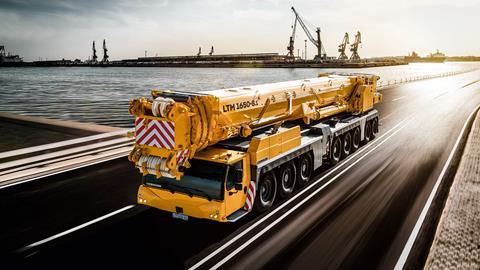Crane manufacturers and industry experts are calling for the removal of what has been described as “an absurd and unworkable” clause in the draft of new European Machinery Regulations.

Hidden away in the appendices of the draft of new European Machinery Regulations is a clause that industry experts and crane manufacturers alike are saying is impossible to deliver. It concerns the design of mobile machinery, for instance cranes or other access equipment. It states that they should be designed to prevent contact with overhead power lines, or where the risk cannot be avoided, be designed to ensure that all hazards of an electric nature are prevented.
While the industry supports measures to improve safety, the clause would prevent the production or import of any new cranes or mobile machinery – as the technology does not exist – for what experts describe as a site management issue.
The EU Machinery Regulations will be an update to the Machinery Directive of 2006. It broadly covers the standards of machinery that can be sold within the EU to uphold a high level of safety requirements. As EU directives need to be transposed into national law to be implemented in each EU member state, the shift from Machinery Directive to Machinery Regulation is intended to reinforce the uniform application and implementation of the legislation across the EU.
In Annex III, Part 3, point 3.5.4, the current version of the regulation states: “When the risk of contact or electric arc with an energised overhead power line to the persons operating machinery incurred by the contact cannot be fully avoided, mobile machinery or related product shall be designed and constructed so as to prevent any electrical hazards in the event of contact with an energised power line.”
This, especially considering the various project sites that mobile cranes or access platforms operate, has been classed as an impossible task. The European association of abnormal road transport and mobile cranes (ESTA) explained: “The manufacturers and their customers have both pointed out that cranes and other types of mobile machinery have to reach heights beyond the height of any power line to do the tasks for which they are intended.
“To achieve what they are designed to do, the structure of such cranes must be made of metal – and metal conducts electricity.”
Klaus Meissner, chairman of CEN TC147/WG11 – the committee responsible for the EN13000 product safety standard for mobile cranes – added: “Neither remote control of mobile cranes, their isolation, nor grounding of the equipment can prevent all hazards when contacting electrical power lines or arcing.
“Using the cabin as shelter would require blocking the doors in case of contact to power lines or arcing, which in itself bears the risk that persons could not leave the cabin in case of subsequent fire.”
Markus Golder, overall chair of CEN/TC 147 – the safety standards committee of the European Committee for Standardisation for all types of crane – concurred: “It is not possible to design such a crane to prevent the risk of contact with an energised overhead power line.
“There are no systems available that can reliably detect live power lines, and therefore such cranes cannot be ‘constructed and equipped in such a way that all hazards of an electrical nature are prevented’, as the regulations require.
Golder, who is a professor at the Faculty for Mechanical Engineering at Chemnitz University of Technology in Germany, continued: “As there is no technical solution available that can reduce this risk, avoiding contact with overhead power lines is an organisational issue and the employer’s responsibility under the Use of Work Equipment Directive (UWED).”
He has asked that the relevant section be deleted from the draft regulations, adding that the potential impact of such a regulation would be enormous and would affect the performance of many important tasks, such the erection or maintenance of wind power turbines and railway construction.
Ton Klijn, ESTA director, described the proposal as “absurd and unworkable”, noting: “What is disappointing is that this problem could have easily been averted if only the relevant authorities had properly consulted the industry in the first place, something that would have saved a lot of time and trouble. As it is, such impractical proposals just bring the Commission into disrepute. To be clear, we are fully behind any practical measures that will improve safety, but these proposals will not.”
















